KBIC Zaagkii project solar-power greenhouse
dedication is August 31/September 1
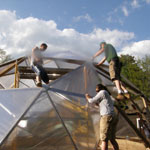 (L’Anse, Michigan) – A dedication ceremony will be held in late August for the 16-foot geodesic dome solar-powered greenhouse that was built this summer at the Keweenaw Bay Indian Community (KBIC) in an effort to restore native species plants to northern Michigan.
(L’Anse, Michigan) – A dedication ceremony will be held in late August for the 16-foot geodesic dome solar-powered greenhouse that was built this summer at the Keweenaw Bay Indian Community (KBIC) in an effort to restore native species plants to northern Michigan.
It’s located at the tribe’s Natural Resources Department north of L’Anse along Lake Superior.
Part of the Zaagkii Wings and Seeds Project, the greenhouse project is sponsored by the Keweenaw Bay Indian Community (KBIC), the United States Forest Service (USFS), the Center for Native American Studies at Northern Michigan University and the nonprofit Cedar Tree Institute (CTI) in Marquette, MI.
Native plants “are one of the underpinnings of the ecosystem for wildlife and water quality,” said Todd Warner, KBIC Natural Resource Director. “They are a foundation for all the insect and pollinator populations.”
“We are expanding our capacity for native plants projects on the reservation,” Warner said.
Tribal members and others will help decide what plants will be grown and where they will be planted
“We try to be part of nature,” said Evelyn Ravindran, KBIC NRD natural resources specialist. “It’s giving a helping hand to get things back to the way they were.”
“We’ll have input from the Cedar Tree Institute and the Forest Service (and others) getting some suggestions about plants that we can grow in the greenhouse,” Ravindran said.
KBIC members will help decide what plants will be grown and where they will be planted.
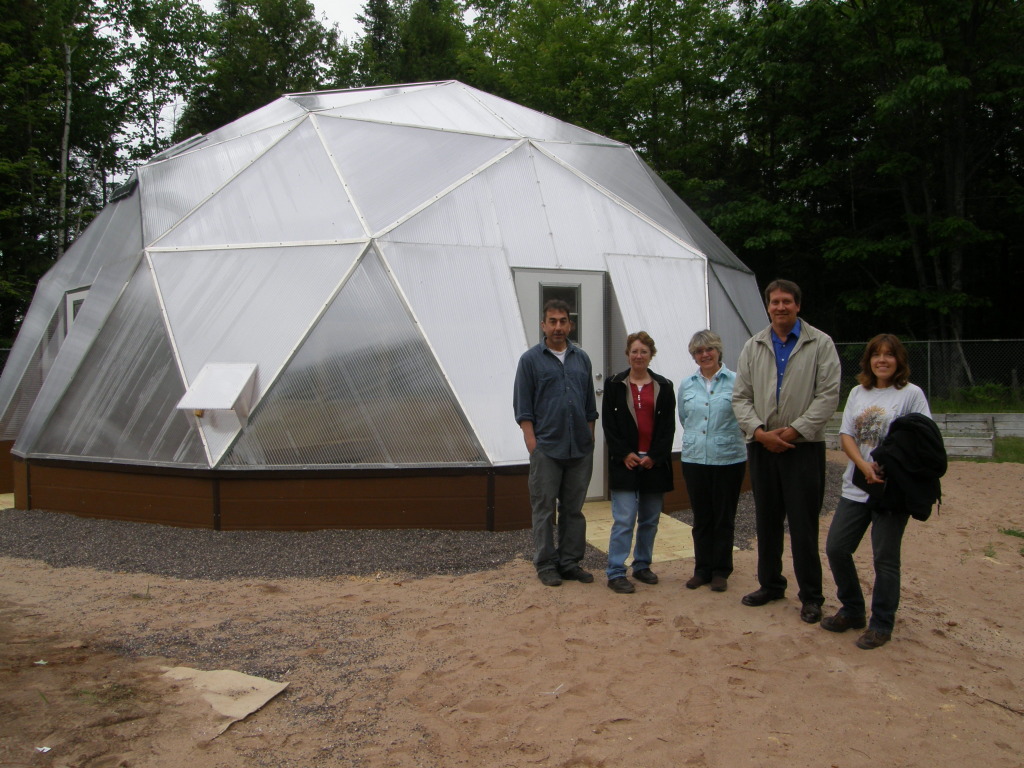
KBIC NRD Director Todd Warner, Sue Rabitaille of Borealis Seed Company, USFS regional botanist Jan Schultz, KBIC Tribal Council President Warren "Chris" Swartz and KBIC Tribal Wildlife Biologist Pam Nankervis check out the KBIC greenhouse.
The greenhouse will grow a wide-range of plants indigenous to the Upper Peninsula starting with the most “cooperative” native plants including Evening primrose (Oenothera biennis), Black-eyed Susan (Rudbeckia hirta) and bee balm (Monarda fistulosa), according to Jan Schultz, regional botanist for the United States Forest Service (USFS) regional office in Milwaukee.
“The new native plant greenhouse at KBIC provides additional tools to help restore damaged lands, offers new educational and recreational opportunities to members of all ages, and hands on experience in the very important tasks of healing the earth,” said Schultz, USFS eastern region program leader for botany, non-native invasive species and special forest products program. “We’re happy, excited and very proud to be involved in the many partnering opportunities for us all – we all benefit and grow from this.”
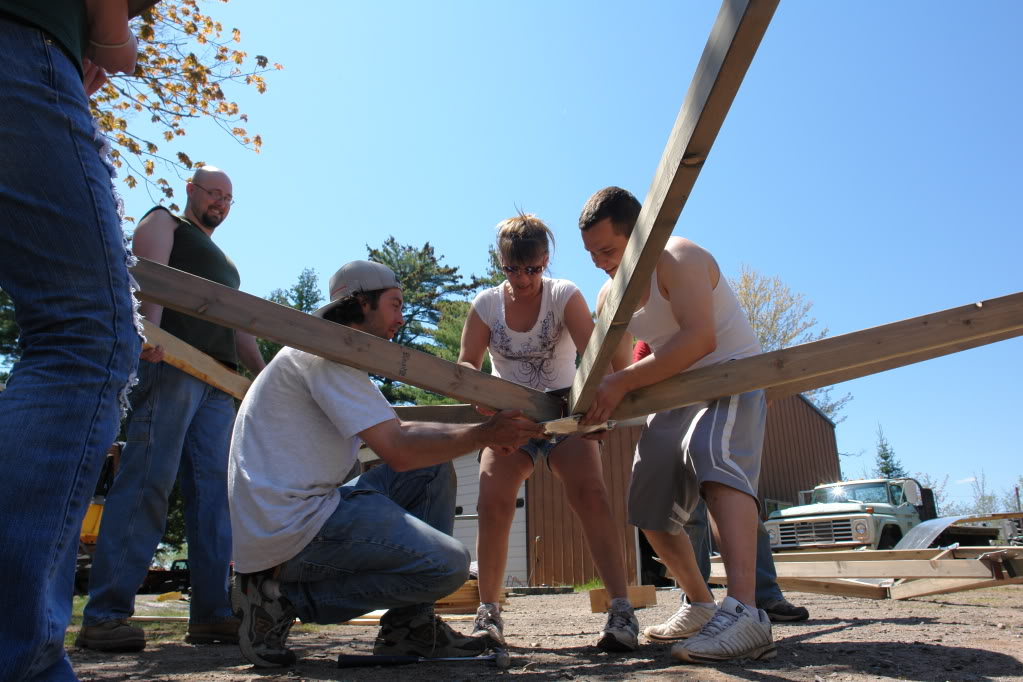
The greenhouse arrived in a color-coded kit purchased from Growing Spaces of Pagosa Springs, Colorado.
The greenhouse includes reflectics insulation on the north side, three solar-powered cooling fans that will take “cool air from the outside and blow it into the dome to help keep it cool in the summer” and a 2,000 gallon water tank designed to store heat, said Allan Werthan, crew supervisor for Growing Spaces.
“It’s designed to grow year around with solar energy – it collects the heat of the day and stores it in massive water tank – so the heat will dissipate slowly at night,” Werthan said.
The outside of the dome is covered with translucent polycarbonite panels and the north side of the dome has additional reflectics insulation to help keep it warm in the winter.
“Since we do not get any sunshine on the north side of the dome – where there is no solar gain to be had – we added another layer of insulation to help make it through the challenging winters here in northern Michigan,” Werthan said. “It also reflects the heat back into the dome so we are not losing it out of the top of the dome.”
A metal glazing strip was attached on top of the aviation tape that cover the dome seams, he said, otherwise the highly-durable tape would disintegrate in the sun in about five years.
“It also makes it look high tech” and adds a space age feel, Werthan said.
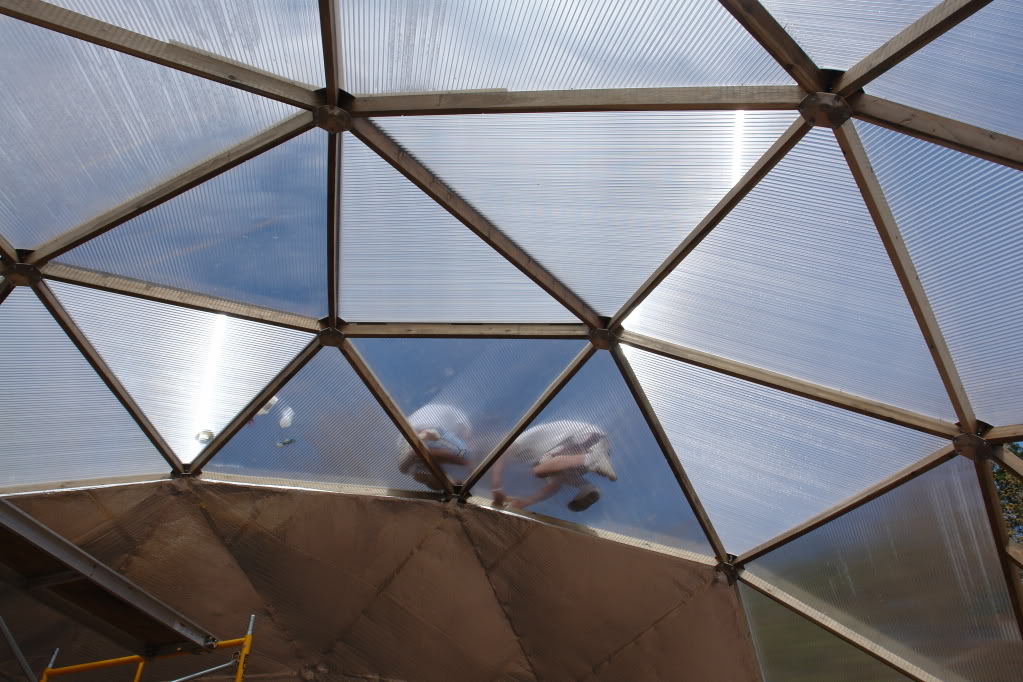
About 15 volunteers began erecting the greenhouse on Monday (May 17, 2010) and it was finished five days later.
The greenhouse will support pollinators – like bees and butterflies – by providing plants indigenous to northern Michigan.
This is the third and final summer for the Zaagkii Project, that involves KBIC and other Ojibwa elders from several tribes teaching Marquette area teens and KBIC youth to protect pollinators and learn why pollinators like bees and butterflies depend on native species plants – some of which used to be considered weeds.
During the past two summers, the youth built dozens of mason bee houses and butterfly houses that have been erected across the KBIC and northern Michigan. The teens planted/distributed tens of thousands of native species plant and seeds.
The greenhouse is one of the first of its kind on an American Indian reservation.
The Zaagiii project was created in response to the deaths of billions of bees and the disappearance of millions of monarch butterflies.
Dubbed Colony Collapse Disorder (CCD), the syndrome has especially devastated honeybee and bumble bee populations worldwide – with the Midwest U.S. one of the hardest hit areas.
Reasons for CCD include pollution, pesticides and mites.
Researchers reported that millions of monarch butterflies did not show up as usual in the spring of 2010 in Mexico and California. One of the flight paths in the annual Monarch migration is through the southern Upper Peninsula.
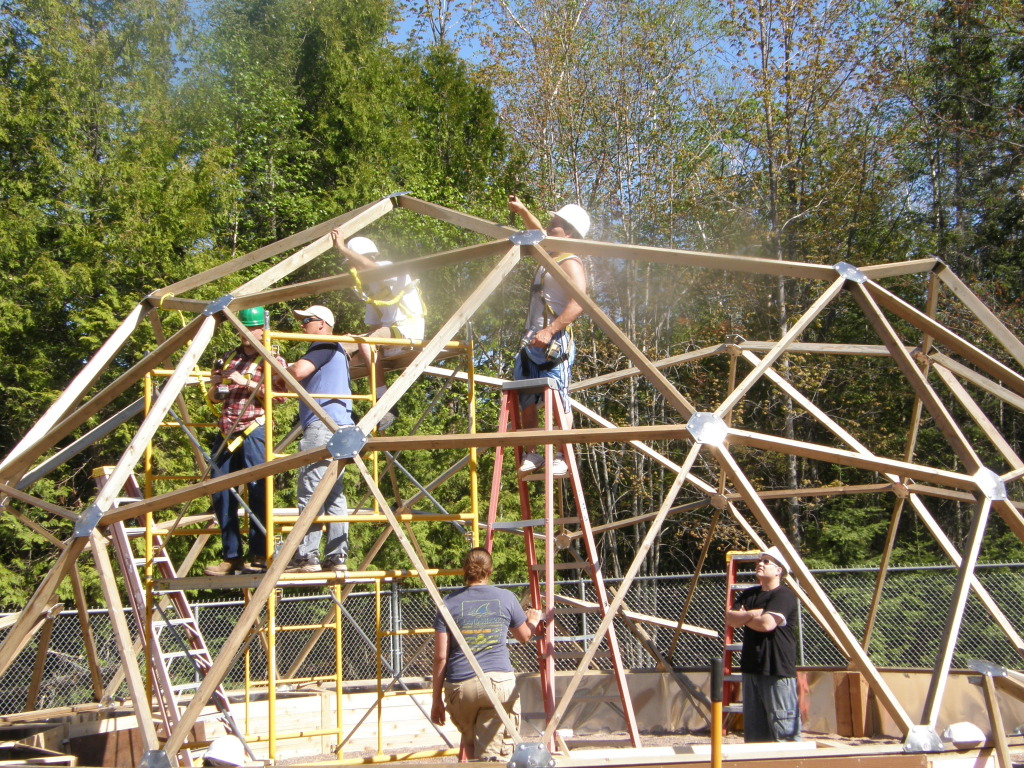
Trudell Construction of Ishpeming was the volunteer builder for the greenhouse project.
“The volunteers have been awesome,” said Rich Trudell, owner of Trudell Construction. “Its been a fun and fascinating project and I am glad to be able to help.”
“I hope to be in touch in the future with Growing Spaces to carry this out to smaller version which they carry, to provide for homeowners,” Trudell said.
Indigenous plants are vital to the health of bees and butterflies.
“These native plants are part of a pollinator cycle in which these native plants are part of the inner fabric of a natural ecosystem,” said Rev. Jon Magnuson of Marquette, Zaagkii Project founder. “Once they are gone, the system is always, always threatened with collapse.”
“We hope the Keweenaw Bay Indian Community becomes a training site for other Native American communities and for the general public,” said Magnuson, CTI executive director.
Zaagkii Project sponsors include KBIC, USFS, Marquette County Juvenile Court, U.P. Children’s Museum and the Northern Michigan University Center for Native American Studies (NMU CNAS).
Zaagkii Project contributors include Marquette Community Foundation, M.E. Davenport Foundation, Kaufman Foundation, Phyllis and Max Reynolds Foundation and many individual supporters.
A two-day grand opening, dedication and naming ceremony will be held on August 31 and
September 1.
View the Photo Gallery
 “Gisheek: Spirit of the Cedar”
“Gisheek: Spirit of the Cedar”








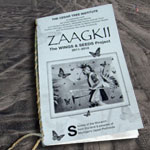 Secrets of the Monarch from the land & peoples of Michigan’s Upper Peninsula.
Secrets of the Monarch from the land & peoples of Michigan’s Upper Peninsula.  The Zaagkii Project is a collaboration between the Cedar Tree Institute, Marquette County Juvenile Court, the US Forest Service and the Keweenaw Bay Indian Community.
The Zaagkii Project is a collaboration between the Cedar Tree Institute, Marquette County Juvenile Court, the US Forest Service and the Keweenaw Bay Indian Community. 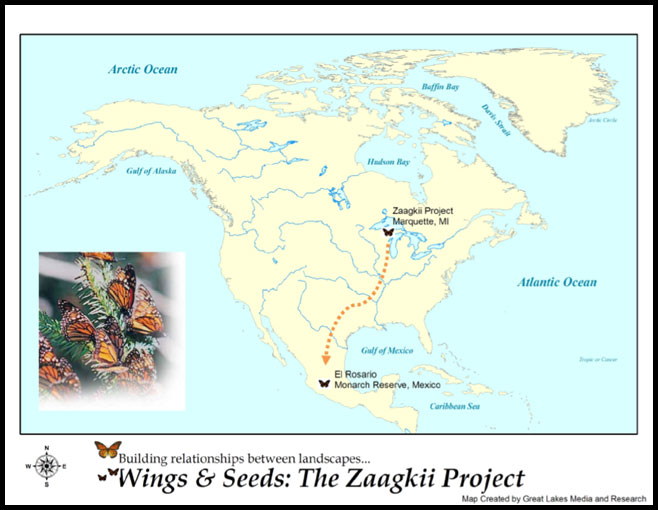
 (L’Anse, Michigan) – A dedication ceremony will be held in late August for the 16-foot geodesic dome solar-powered greenhouse that was built this summer at the Keweenaw Bay Indian Community (KBIC) in an effort to restore native species plants to northern Michigan.
(L’Anse, Michigan) – A dedication ceremony will be held in late August for the 16-foot geodesic dome solar-powered greenhouse that was built this summer at the Keweenaw Bay Indian Community (KBIC) in an effort to restore native species plants to northern Michigan.



 The Marquette Monthly featured a Story on the Zaagkii Project – entitled “KBIC helps indigenous plant restoration with greenhouse” in the July, 2010 issue by Greg Peterson.
The Marquette Monthly featured a Story on the Zaagkii Project – entitled “KBIC helps indigenous plant restoration with greenhouse” in the July, 2010 issue by Greg Peterson. Years 2008 & 2009 of the Zaagkii Project are briefly recapped and the third and final year 2010 is summarized in this article posted Tuesday, February 2, 2010 by Jan Schultz.
Years 2008 & 2009 of the Zaagkii Project are briefly recapped and the third and final year 2010 is summarized in this article posted Tuesday, February 2, 2010 by Jan Schultz. Native American Times News Story on Zaagkii Project – entitled “As bees die, Keweena Bay Indian Community adults, teens actively protect pollinators” posted Monday, October 27, 2008.
Native American Times News Story on Zaagkii Project – entitled “As bees die, Keweena Bay Indian Community adults, teens actively protect pollinators” posted Monday, October 27, 2008. Tree Hugger News Story on Zaagkii Project – entitled “Michigan Teens Build Butterfly Houses and Plant 26,000 Native Plants through the Zaagkii Wings and Seeds Project” posted Sunday, October 26, 2008 by Sara Novak, Columbia, SC.
Tree Hugger News Story on Zaagkii Project – entitled “Michigan Teens Build Butterfly Houses and Plant 26,000 Native Plants through the Zaagkii Wings and Seeds Project” posted Sunday, October 26, 2008 by Sara Novak, Columbia, SC.